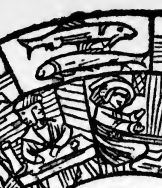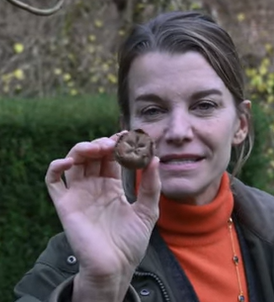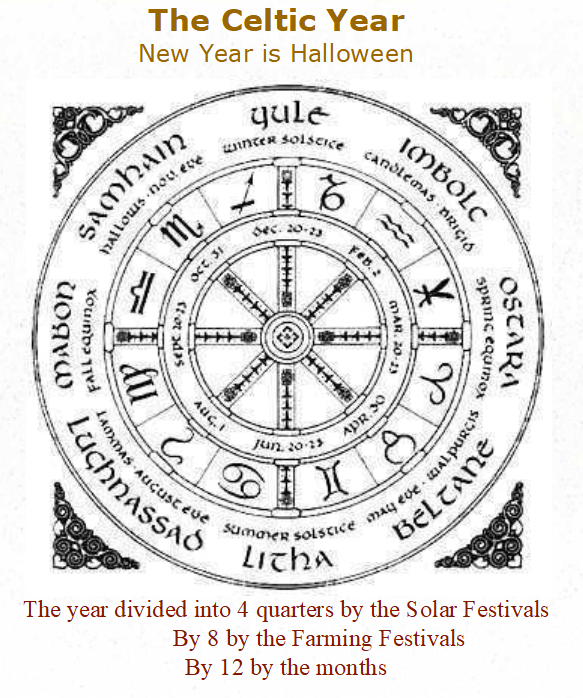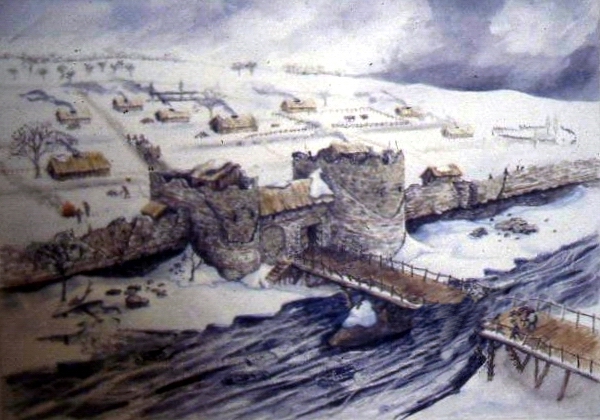


Photos of the River Lee and Mrs Towser (the narrow boat with the orange gaz locker) by Harriet Salisbury.
I have been busy moving my narrow boat up the River Lee to Stansted Abbotts to have her bottom seen to.
.

The Past brought to Life



Photos of the River Lee and Mrs Towser (the narrow boat with the orange gaz locker) by Harriet Salisbury.
I have been busy moving my narrow boat up the River Lee to Stansted Abbotts to have her bottom seen to.
.


A man born in Pisces shall be a great goer, a fornicator, a mocker and covetous: he will say one thing and do another. He shall trust is his sapience, he shall have good fortune: He will be a defender of widows and orphans. He shall be fearful on water: he shall soon pass all adversities and live 72 years after nature.
The woman shall be delicious, familiar in jests, pleasant of courage, fervent, a great drinker. She shall have sickness of her eyes and be sorrowful by shame, needlessly. Her husband will leave her and she shall have much trouble with strangers. She shall travel much, have pain in his stomach and live seventy-seven years.
Both man and woman shall live faithfully.
Kalendar of Shepheardes, 1604 (from the Perpetual Almanac by Charles Kightly
What surprises me about the above is that it has to be nearly always wrong as the predictions are too specific.
Now, the Old Moore’s 2023 Almanac had a page on Liz Truss of all people, clearly written before she imploded as Prime Minister, and it is clear they think she has a real chance of being PM. They say she has ‘an almost steely determination and plenty of apparent ambition. …. She has every astrological requirement necessary to keep her nose clean and at this moment in time is certainly among the main contenders.‘. So yes they are right about her being among the main contenders but absolutely no hint of the disaster that her PMship was. Similarly the 2022 Old Moore’s Almanac had no hint of the Ukraine war.
I am working on a new season, and these are the walks for the first six months – but more to come.
The Archaeology Of London Walk Sunday 2nd April 2023 11:15 Exit 3 Bank Underground Station To book
Jane Austen’s London Sat 2.30 pm 2nd April 2023 Green Park underground station, London (north exit, on the corner). To book
Chaucer’s Medieval London Guided Walk Aldgate Tube Sunday 16 April 2023 11.30pm To book
Chaucer’s London To Canterbury Virtual Pilgrimage Sunday 16th April 2023 7.30pm To book
The Peasants Revolt Anniversary Guided Walk Aldgate Underground Sunday 11th June 2023 10.45am. To book
The Peasants Revolt Anniversary Virtual Tour Sunday 11th June 2023 7.30pm To book
For a complete list of my walks in 2023 look here
Me. Im nown to be the world’s worse prooofreader. And I quiet often only spot errors after i have prest the ‘publish’ button.
So, if you are reading this via the email, click on the title and this will take you to the blog in the cloud, and you are likely to have a version where I have got rid of some of the most horrifiable, embrasing igregious erors. But only, some obvs.

Medlars were a very common and useful fruit particularly in the Medieval and Early Modern period. They come out in December but can only be eaten when they are rotten and ‘bletted’. They also store well. They, therefore, provide a source of winter sweetness when there were few other fresh sources available.
They are from the Rosaceae family which includes apples, pears, rosehips and quinces. The English called them ‘open arses’ or ‘dog’s arses’ or ‘granny’s arses’ because of the way they looked until the more polite French name the Medlar caught on.
Shakespeare uses both words and uses their sexual connotations as they were thought also to look like female genitalia. A medlar was also a name for a prostitute. So in Romeo and Juliet this speech by Mercutio to Romeo and their mates contains some very bawdy thoughts:
If love be blind, love cannot hit the mark.
Now will he sit under a medlar tree
And wish his mistress were that kind of fruit
As maids call medlars when they laugh alone.
O, Romeo, that she were, O that she were
An open-arse and thou a poppering pear!
RJ 2.1.33
I think you can also see how good Shakespeare was at making his allusions available to all classes. For the sophisticated he begins with the reference to the French medlar and in case the groundlings are missing out throws in the ‘open-arse’ so they know what he is alluding to.
Medlars fell out of favour in the 18th and 19th Centuries. For more on medlars have a look at British Food history https://britishfoodhistory.com/2017/11/12/forgotten-foods-7-openarses/
Or watch this video from ‘the American Viscountess’ from which I extracted the picture of the medlar above.

The Irish have created a brand new Bank Holiday for St Bridget. The first one is today Monday 6th February 2023 and it follows a public holiday given last year for Health Workers in March. The timing of the Bank Holiday is explained by the Irish Post:
St Brigid’s Day itself falls on February 1 each year but going forward the Imbolc/St Brigid’s Day public holiday will fall on the first Monday in February, unless February 1st falls on a Friday.
This means that Ireland now has a public holiday on the 4 Celtic festivals of Samain (Halloween), Imbolc (St Bridget’s Day), Beltane (May Day) and Lughnasa (Lammas Day). These festivals are quarter-days, which mean they fall half way between the Solstices and Equinoxes.
The Independent wrote that ‘then-Tánaiste, Leo Varadkar, said last year‘ ….“This will be the first Irish public holiday named after a woman,” He also is quoted as saying:
“It marks the half-way point between the winter solstice and the equinox, the beginning of spring and the Celtic New Year.”
Extra Bank Holidays in the UK?
There are occasional calls for a new Bank Holiday in the UK. It’s often a Conservative MP calling for a National Day for the British and they often suggest a date like Trafalgar Day 21st October (commemorating the great Naval battle in 1805 in which Nelson was fatally wounded). It has several virtues in their eyes. Firstly, it is a day that confirmed Britain’s mastery of the Seas and thus is an ideal day for celebrating patriotism. Secondly, it is the school half term, and gives a much needed day off between summer and Christmas. Thirdly, they can suggest the day should be taken from May Day Bank holiday which coincides with the International Worker’s Day, which is obviously ‘a bad thing’.
For example, the Portsmouth MP’s supported a call for Trafalgar Day here: . The report says: ‘there are currently no bank holidays in the UK which celebrate battles or war victories’.
This, I think, leaves the rest of us thinking ‘What planet do these people live on?’ Yes, Trafalgar Day would have been a great day for a Bank Holiday IF this were 1839, maybe even 1939. But in 2023 it is just not on any ordinary person’s radar. We don’t think so very much about the Napoleonic War or Nelson, or nor do we often sing ‘Heart of Oaks, are our Men’ any more. In short, it is a reminder how distant from the rest of us Conservative MPs are, and how progressive Ireland has become by contrast.
Recently, we have been given a few Royal Bank Holidays, last year for the Queen, this year for the King. The Trade Union Congress proposed the need for more bank holidays because we only have the usual eight annual bank holidays for workers in England and Wales. Scotland has nine or ten; the average for the EU is ‘12.3 bank holidays a year. Finland and Romania get 15, while workers in Japan have 16 public holidays in total’.
A recent radio programme ‘The Bottom Line’ compared Britain with France and revealed that Britain is now 20% less productive than France, (up by 10% since Brexit) and that we make up the deficit by working longer hours. It appears that the French high tax. high worker’s protection regime, means they have to find ways of getting more out of the same hours, while we can just hire and fire, and are happy to make people work in a more inefficient way.
Here is my recent post about St Bridget’s Day

The Guardian has recently written a piece on this subject which I am following as I recover from the hernia operation. I found publishing from my phone from the hospital bed surprisingly easy as it was the first time I had used the phone for writing the Almanac of the Past
My typing on the computer is fast but very, very inaccurate and clumsy and full of revision and cutting and pasting and rewriting and typos. So its quite hard work bashing it into shape. But I found it much easier on the phone, with the fingers of one hand being less prone to error and, in some strange way, more directly attached to the part of my head that composes the text into something vaguely readable. But it is more difficult to add the images. I have now been at home for 4 days and my phone is dying (I am well!) so back to normal methods.
www.theguardian.com/books/2023/jan/31/hanif-kureishi-hospital-musings-sickbed-writing
Today, I have been completely revising the entry for February 3rd St Blaise’s day with a few thoughts as to why the stories of the Martyr Saints are so very gory.

A point I wanted to make earlier about Brexit is on British/English exceptionalism.
When I was at school we were taught the history of ‘This Island Story’, something that is hardly mentioned in the 21st Century. But it was part of the Imperial story of the British Empire and distanced ourselves from Europe.
Britain first was at a distance from Europe when the landbridge that is now called Doggerland was swept away by rising meltwater in about 8,000 years BP and made us an Island.
As farming spread from Asia Minor it took an extra hundred years to bridge the Channel.
The most interesting difference is at the end of the Roman period. When the western part of the Roman Empire fell in the 5th Century, it was taken over by Germanic Kings. The Franks in France and Germany; the Anglo Saxons etc in England; the Lombards in Italy and Goths, Visigoths, Vandals in Spain (and N. Africa).
On the mainland the German Kings became native and the Latin language, and Christian religion maintained a strong tradition of Roman law and culture. French, Italian, Spanish,Roumanian are all romance languages based on Latin.
But cross the Channel to England and our German Kings didn’t adopt the Latin language and indeed the Celtic dialect of Brittonic (except of course in Wales), and changed the religion to pagan. So English culture is Germanic and not Roman.
So we do not have a foundation in Latin culture and Roman law.
In the 16th Century Britain further turned from Catholic Culture. But the next really significant difference was the changes instituted by Napoleon as he subdued and changed and to an extent rationalised and liberalised the continent with dreams of creating United Europe of Nations (in contrast to the Empires that held sway (such as the Holy Roman Empire, and the Austro-Hungarian Empire https://www.napoleon-series.org/research/napoleon/c_unification)
Most legal systems in Europe are based on Roman Law as amended by the Napoleonic code. England by contrast is based on the Common Law.
So these differences combined with our arrogance of Empire, the Industrial Revolution and belief we won World War 2 (not to mention our pride in Shakespeare, Newton and Darwin etc etc) probably lay behind ‘British Exceptionalism’ which led to the misguided belief that we are held back by Europe despite all the evidence to the contrary.
Here is a disillusioned Tory party donor who believes Brexit is a ‘complete disaster…. and total lies.’ And here an economic assessment.
And what is, in some ways, worse is that the government is planning a Bonfire of the EU Regulations. Rees-Moog is responsible to this obscene anti-democratic Bill presented to the House of Commons. He sees it as getting rid of a whole raft of EU regulations that have entered our legal system during our 40 years of membership of the EU.
He claims anyone who opposes his bill is reopening the Brexit debate. This is a natural autocrat’s lie. Brexit was presented as ‘bringing back control to the people and to Parliament’. What this Bill is, is bringing massive power back to Ministers in the Government. All these European regulations will be examined by Ministers and their departments, and THEY decide what to drop and what to not. European Regulations govern of lot of our laws on work, farming and industry and much more. If the Minister decides he does not like a regulation HE or SHE can get rid of it. It does not need parliament to approve it, nor an election. There is not enough time or resources put to this for proper scrutiny by the Department’s Civil Servants, nor the Government, and none for Parliament.
It is an outrage to my mind, and shows that people like Rees-Moog have really been trying to turn Britain into a de-regulated economy for the benefit of people like himself with very little thought for the health of our democracy.

On this day, 2021, the United Kingdom, formally left the European Union.
I remember vividly the morning the referendum result was announced. We were all in Glasgow for my daughter’s Graduation, and we all burst into tears.
So how is it going? Just look at the graph above, exports down 7.7% compared to other advantaged economies since 2018.
Support for Brexit has gone right down. 51% think it was a mistake, 31% think it was the right decision. We all guffaw when someone says ‘Brexit Opportunities’ and think Jacob Rees Moog a throw back to the Age of Empire. (I’m being polite).
I’ve long seen the parallels with the Decline and Fall of Roman Britain. In AD 407, Britain threw off Roman rule and took independent control. We had 4 leaders of no great distinction in a short span. Seem familiar?

Then we wrote, in AD 410, a letter to the Emperor Honourius asking him to take us back. He said ‘Sorry, pals, the Goths are at the gates of Rome, but you can raise your own Armies to defend yourself.’
Now, the archaeology of this period is very difficult so it’s hard to know what happened in detail. But we do know that coins went out of circulation, pottery manufacture ceased in Britain and Roman Towns declined dramatically.
My friend, Oxford Professor Bryan Ward-Perkins, to wrote a book on the Decline of the Roman Empire in which he says that we next reached the level of international trade achieved at the height of the Roman Empire in 1500. 1000 years after the fall of Rome.
It would seem that the destruction of a free trade zone is a disastrous choice.
The second example would be when Henry VIII took Britain out of Christendom as Parliament adopted Protestantism. The auguries are much better here despite the worst destruction of cultural heritage in England’s history. It can be argued that the selling off of the one third of the land of the kingdom owned by the monasteries boosted the gentry and broadened the elite to include a more entrepreneurial class.
Also, the downside in terms of turning our back on Europe wasn’t so destructive because Catholic Europe wasn’t a free trade zone, and much of Northern Europe was protestant.
The other possible parallels are the Napoleonic War and World War 1 and 2. I think two major exceptions figure here. Firstly, the UK was a global trading nation and Empire which made it much less dependent on trade with Europe. Secondly, the economy was on a war footing so lost production was more than compensated for.
I’ve been writing these last two posts from Homerton Hospital where I am awaiting discharge after hernia surgery. Not too painful and I mention it just to remind everybody what a marvelous job the NHS does. What happens is that Labour Governments boost spending to a reasonable level while the Conservatives squeeze the NHS to unsustainable levels.
10 years of austerity followed by Covid and Ukraine have brought parts of the NHS to their knees, in particular the ambulance services.
So, yes, the country cannot trust a conservative government with the NHS, but perhaps another question has to be asked. Can the country trust a system that cannot trust 1 of its 2 main governing parties?
But maybe, we need not worry because this is by far and away, the worst government, most incompetent, most corrupt, most cruel, least able to plan, least respected of any government I have seen in my life time. Maybe we will soon see the back of them?
Here is a disillusioned Tory party donor who believes Brexit is a ‘complete disaster…. and total lies.’ And here an economic assessment.
And what is, in some ways, worse is that the government is planning a Bonfire of the EU Regulations. Rees-Moog is responsible to this obscene anti-democratic Bill presented to the House of Commons. He sees it as getting rid of a whole raft of EU regulations that have entered our legal system during our 40 years of membership of the EU.
He claims anyone who opposes his bill is reopening the Brexit debate. This is a natural autocrat’s lie. Brexit was presented as ‘bringing back control to the people and to Parliament’. What this Bill is, is bringing massive power back to Ministers in the Government. All these European regulations will be examined by Ministers and their departments, and THEY decide what to drop and what to not. European Regulations govern of lot of our laws on work, farming and industry and much more. If the Minister decides he does not like a regulation HE or SHE can get rid of it. It does not need parliament to approve it, nor an election. There is not enough time or resources put to this for proper scrutiny by the Department’s Civil Servants, nor the Government, and none for Parliament.
It is an outrage to my mind, and shows that people like Rees-Moog have really been trying to turn Britain into a de-regulated economy for the benefit of people like himself with very little thought for the health of our democracy.

The Society of Antiquaries Salon Newsletter has a fascinating report on an analysis of the virtues of Roman Concrete. Working as an archaeologist in the City of London, Roman concrete (opus signinum and opus caementicium) has long been a fascinating subject upon which I have pontificated (without a huge amount of research).
I first came across it at the GPO site just north of St Paul’s Cathedral and what I remember is the contrast to the sandy mortar of 10th/11th Century St Nicholas Church which we were also excavating.
Roman cement, which was pink, was incredibly hard. Medieval mortar was yellow and soft. You could successfully get through the medieval stuff with a trowel or, if you had to, with your finger nail. But opus signinum required a kango pneumatic drill. Properly, signinum has fragments of pottery bonded into the concrete, but we also found it used without inclusions.

According to the 10 Books of Architecture by Vitruvius (Marcus Vitruvius Pollio) it should be made using volcanic ash which outcropped around Rome and Naples. Without volcanic ash in Britain, the Romans ground down tiles/bricks and added it to lime and sand to make a very effective cement. It was often then ‘reinforced’ by using a mixture of cement and rubble limestone in the core of a wall.
As medieval Londoners dug under the City during building work or while digging pits, they often struck unlucky by hitting some rock-hard Roman foundations. The legend spread that the Roman cement was so hard because it was made of a magical formula that contained Bull’s Blood. (It was also normally said to be built by Julius Caesar!)
The Roman cement was also made in a water-proof version, allowing Roman amphitheatres to be flooded for naval re-enactments. All proper Roman archaeologists have also paid homage by going to Rome to see the totally amazing domed roof of the Pantheon, commissioned by Augustus’ right hand man Marcus Agrippa. Marcus Agrippa (27 BC – 14 AD).
So, this article by the Salon gives some explanation as to how the concrete vault of the Pantheon roof can have stayed up for 2,000 years and defied inevitable cracking. I have copied it word for word, (I did once ask if they minded and they said no) but also give a link to the original below.
By the way, the GPO site was a landmark in Roman Archaeology because it completely changed the view of early Roman London when we discovered densely occupied Roman houses, a long way outside of the area thought to be the core of the early City. And Vitruvius’s book on architecture is well worth reading. I might add a sample tomorrow?. Finally, I remember reading that when the Custom House in London suffered a collapse after only a few years, it was rebuilt by Robert Smirke (who also bulit the Classical British Museum building) using a new formulae for cement was is said to be the first concrete in Britain to surpass the quality of the Roman original.

https://mailchi.mp/sal/salon-issue-547287?e=34bc1ba8ed#edhighlights
Many of us will have stood in the Pantheon in Rome and wondered how this beautiful structure can still be standing today. It is the largest unreinforced concrete dome in the world, built under the emperor Hadrian in 126 AD. Researchers have recently been analysing the content and technique of mixing Roman concrete to identify why it has lasted so long and they may have uncovered its secret.
Admir Masic, Professor of civil and environmental engineering at Massachusetts Institute of Technology, led the research project, working with Harvard University. In his paper published in Science Advances, Masic explains that Roman concrete contains millimetre-scale white lumps known as lime clasts, which may have helped seal up cracks, formed over time.
The Romans made concrete by made by mixing lumps of volcanic rock and other aggregates, together with a mortar such as volcanic ash, a source of lime (calcium oxide) and water. The lime clasts found were ‘porous with cracks’ and had most likely been formed at a high temperature in a low water environment. This suggests the quicklime was not mixed with water before it was added to the other ingredients as is the case in modern concrete, but was mixed with the ash and aggregates first. This ‘hot mixing’ produces heat, which helps set the concrete and reduces the water content around the lime clasts.
This means that, if subsequently, water seeps into the Roman concrete, it will dissolve the calcium carbonate and form new calcite as it passes through the lime clasts, which will help to seal up any cracks that have formed. Indeed, cracks filled with recently formed calcium carbonate have been found in Roman concrete.
Masic and his team tested this theory out by creating chunks of Roman-style concrete, containing cracks 0.5mm wide. They ran water over the concrete and in the samples containing lime clasts, within two weeks, the cracks sealed over with newly-formed calcite. Control samples of the concrete made without the lime clasts, did not seal.
Masic believes modern construction techniques could learn something from the Romans; ‘Roman-inspired approaches, based for example on hot mixing, might be a cost-effective way to make our infrastructure last longer through the self-healing mechanisms we illustrate in this study.’ An added bonus is that the development of a more resilient concrete ‘could help reduce the environmental impact of cement production, which currently accounts for about 8% of global greenhouse gas emissions’.
Image credits: Concrete Interior or the Pantheon, FLICKR / CC BY-SA 2.0′